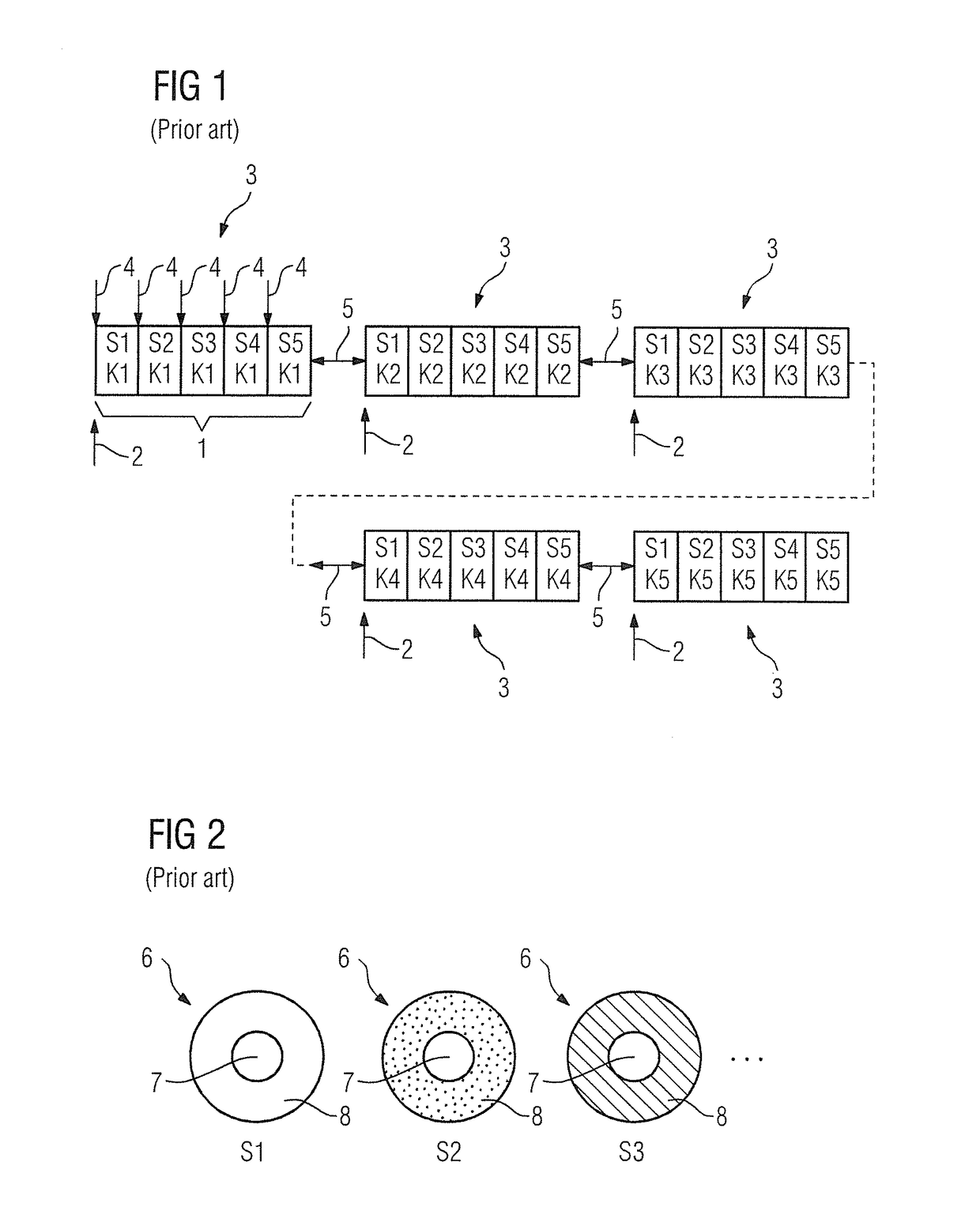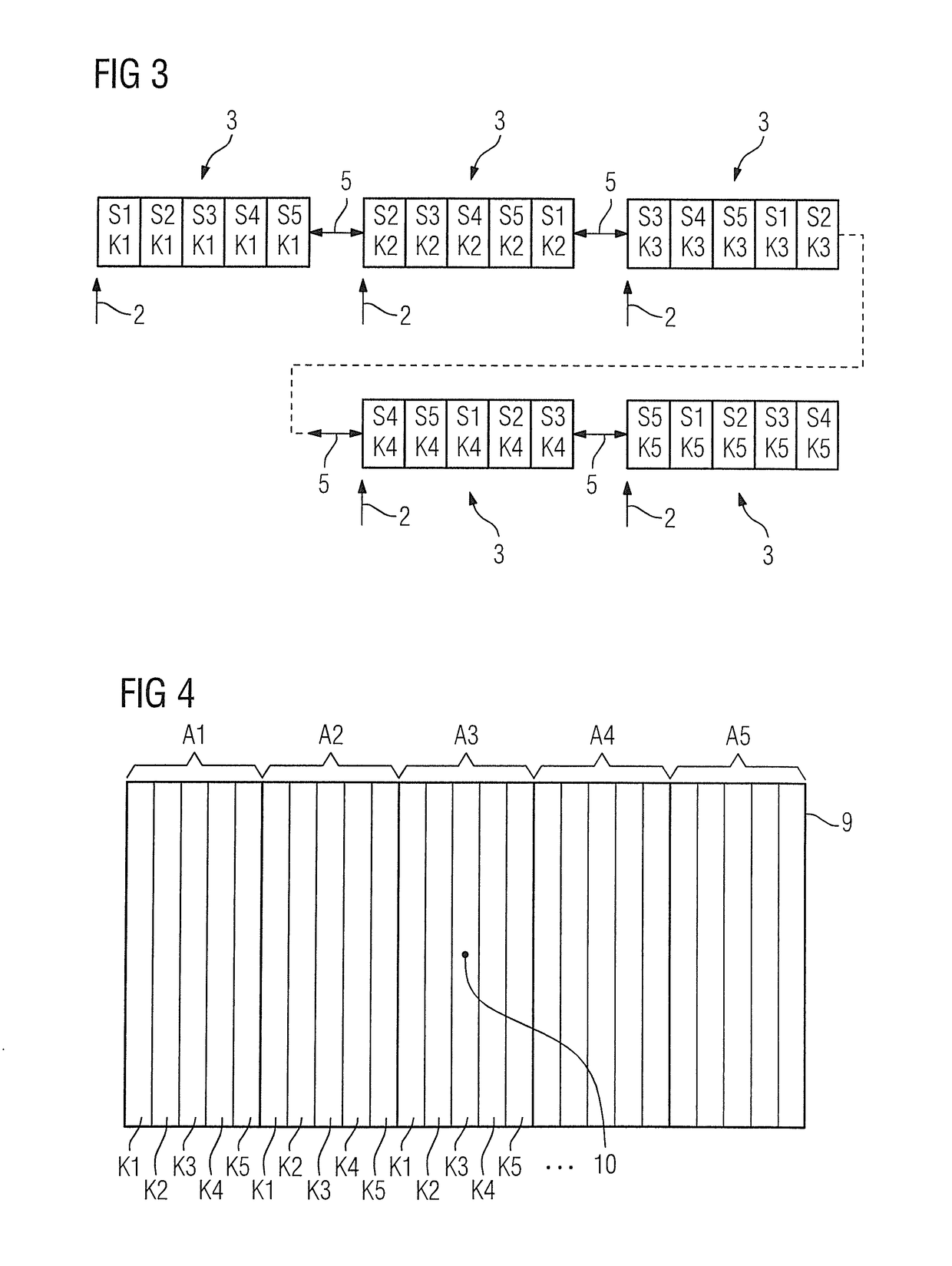Method and magnetic resonance scanner for acquiring a magnetic resonance data set
a magnetic resonance and data acquisition technology, applied in the field of methods and magnetic resonance scanners, can solve the problem of no longer producing slices of images in which clearly insufficient fat saturation is present, and achieve the effect of uniform fat saturation
- Summary
- Abstract
- Description
- Claims
- Application Information
AI Technical Summary
Benefits of technology
Problems solved by technology
Method used
Image
Examples
Embodiment Construction
[0027]If respiration-triggered multi-shot acquisitions of a plurality of slices are to be carried out according to the prior art, an acquisition sequence as shown in FIG. 1 for five slices S1, S2, S3, S4, S5 and five k-space portions K1, K2, K3, K4, K5 is normally used. It should be noted at the outset that, for all the exemplary embodiments shown here, the trigger signal indicating a particular breathing state at which an acquisition time window 1 begins and marked by arrows 2 in FIGS. 1, 3 and 5 can be obtained optionally and / or in a combined manner by evaluating a navigator acquired using the magnetic resonance scanner, from sensor data of a breathing belt and / or from sensor data of some other breathing sensor. In addition, TSE sequences, which are frequently employed for such multi-shot acquisitions, are used herein by way of example.
[0028]As shown, because of the time-limited length of the acquisition time window 1, the examination breaks down into five acquisition blocks 3, ea...
PUM
 Login to View More
Login to View More Abstract
Description
Claims
Application Information
 Login to View More
Login to View More - R&D
- Intellectual Property
- Life Sciences
- Materials
- Tech Scout
- Unparalleled Data Quality
- Higher Quality Content
- 60% Fewer Hallucinations
Browse by: Latest US Patents, China's latest patents, Technical Efficacy Thesaurus, Application Domain, Technology Topic, Popular Technical Reports.
© 2025 PatSnap. All rights reserved.Legal|Privacy policy|Modern Slavery Act Transparency Statement|Sitemap|About US| Contact US: help@patsnap.com



